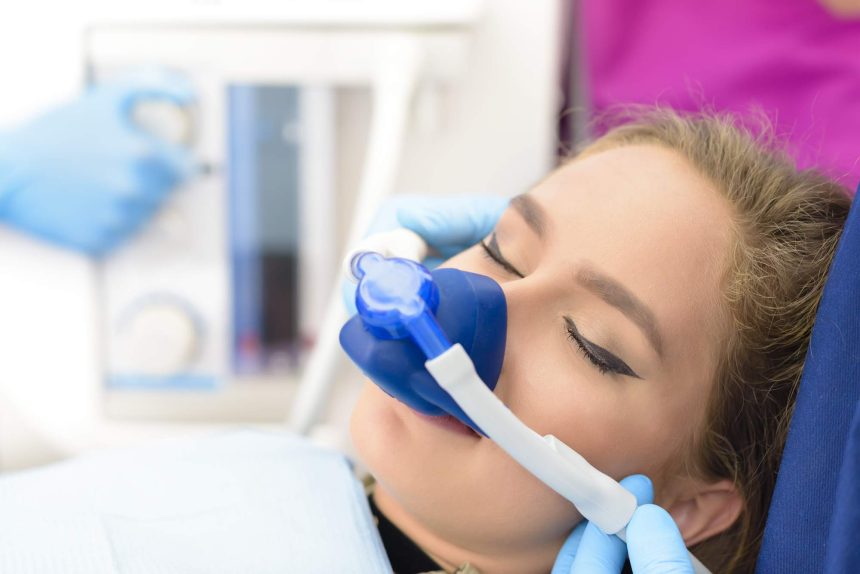Do you experience dental fear or anxiety? If so, you are not alone. According to a study, dental anxiety affects over 36 percent of the population, with over 12 percent of people estimated to suffer from extreme fear and anxiety during dental visits.
Because of this anxiety, doctors invented sedation dentistry to solve the problem. But what is sedation dentistry? Read below to understand more about it and what to expect during your appointment:
1. What Is Sedation Dentistry?
Sedation dentistry uses medication to relieve and get rid of anxiety associated with dental visits. These medications will put you at ease and relax you for the procedure. Sedation dentistry is often used for individuals suffering from dental anxiety.
Sedation dentistry is also known as twilight sleep or conscious sedation dentistry. That’s because it helps create a short-term state of forgetfulness in patients where they will not have any sensitivity to pain without losing consciousness.
Keep in mind that dental fear could manifest on a scale that ranges from pre-visit nervousness to overwhelming anxiety and fear during the procedure. This anxiety leads to patients skipping their dental visits, which leads to poor oral hygiene and other dental diseases. This means you could end up needing more intensive surgical orthodontics procedures.
2. People Who Need Sedation Dentistry
Sedation dentistry is great for reducing dental anxiety and fear. Therefore, individuals of all ages can greatly benefit from this procedure. This includes young children and aging individuals. Most dentists recommend that people with the following conditions get sedation:
- They fear needles or have aichmophobia
- Very sensitive gag reflexes
- Fear and crippling anxiety of going to the dentist
- Have special needs, including behavioral, cognitive, and physical special needs
- Have difficulty in controlling their movements
- Extremely claustrophobic when sitting in a dental seat
- Have very sensitive teeth
- Have decreased sensitivity to localized anesthesia
Sometimes, even patients who don’t experience crippling anxiety due to upcoming dental visits may have fear related to their procedure if they don’t know what to expect.
3. Types Of Sedation Dentistry
Based on your anxiety level and unique needs, there are numerous types of sedation dentistry. Other factors that impact the type of sedation include your medical history, procedure length, and preferences.
Below are the three most common types of sedation dentistry:
Oral Conscious Sedation
With this type of dental sedation, the dentist will give you a sedative in the form of a pill.
Most dentists recommend taking the medication at least one hour before the procedure. Today, most dentists prefer using Triazolam or Halcion, a Valium (Diazepam) family drug. However, your dentist may also use other sedatives such as Lorazepam or Zaleplon.
Some dentists also prefer using liquid sedatives like Midazolam oral syrup, especially in pediatric dentistry. Oral conscious sedation may make you feel dizzy and sleepy. You may even fall asleep during the procedure.
However, you may still communicate with the dental team during the procedure if needed. They will just wake you up with a gentle nudge.
If you need sedation, you may want to ask a family member or friend to bring you to the dentist because you will not be able to drive afterward. That’s because the medication affects the cognitive mind, affecting your motor skills and memory.
Nitrous Oxide
Nitrous oxide, or laughing gas, is one of the most common forms of dental sedation. You will inhale the gas through a nosepiece or a face mask, and you will immediately feel the effect. Most patients often start feeling the relaxing and calming effects up to five minutes after inhalation.
The dentist will check your medical history and other factors and adjust your dosage accordingly. You will likely inhale the gas throughout the procedure, and once it’s done, the dentist will swap the nitrous oxide for pure oxygen to purify your body. The oxygen will flash out the laughing gas from your system quicker.
And because the gas leaves your system quickly, you will likely be able to drive yourself home. However, it’s always advisable to bring a friend or a family member with you to be safe.
Intravenous Sedation (IV)
Intravenous sedation is the most intense type of conscious sedation used in dentistry. Your dentist will give you the sedative medication through an IV line. The medication is delivered directly into the bloodstream.
The dentist will closely monitor your oxygen levels, blood pressure, and heart rate throughout the surgery to ensure nothing goes wrong. They can reverse the medication and adjust it throughout the procedure if need be. In most cases, people who receive IV sedation are often unconscious during the procedure, falling into a deep sleep, and when they wake up, they have no memory of the procedure.
This is one of the best options for individuals suffering from severe dental fears and anxiety. It’s also great for patients going through intensive and lengthy dental surgeries.
General Anesthesia
With so many sedation medications in dentistry, most people wonder whether general anesthesia is also used in dental settings. The answer is yes.
Sometimes, ambulatory facilities and major hospitals may use general anesthesia when treating individuals with severe dental fear, people with disabilities, and young kids. However, it’s essential to note that general anesthesia is a form of unconscious sedition. Hence, you will be completely unconscious throughout the entire procedure.
However, not everyone is qualified to deliver general anesthesia. Your dentist must have specialized and advanced training to deliver general anesthesia. In most cases, an anesthesiologist should provide this type of anesthesia.
Now You Know What To Expect During Your Dental Appointment
There are millions of individuals today suffering from dental anxiety. Fortunately, sedation dentistry helps them overcome their anxiety and get the dental procedures they need to maintain great oral hygiene.
So what is sedation dentistry? Unfortunately, most people don’t know much about this sector of dentistry. Read above to understand more about sedation dentistry and how it can help you get over your dental anxiety.
Did you enjoy this article? Check out other posts on our site for more life hacks.














